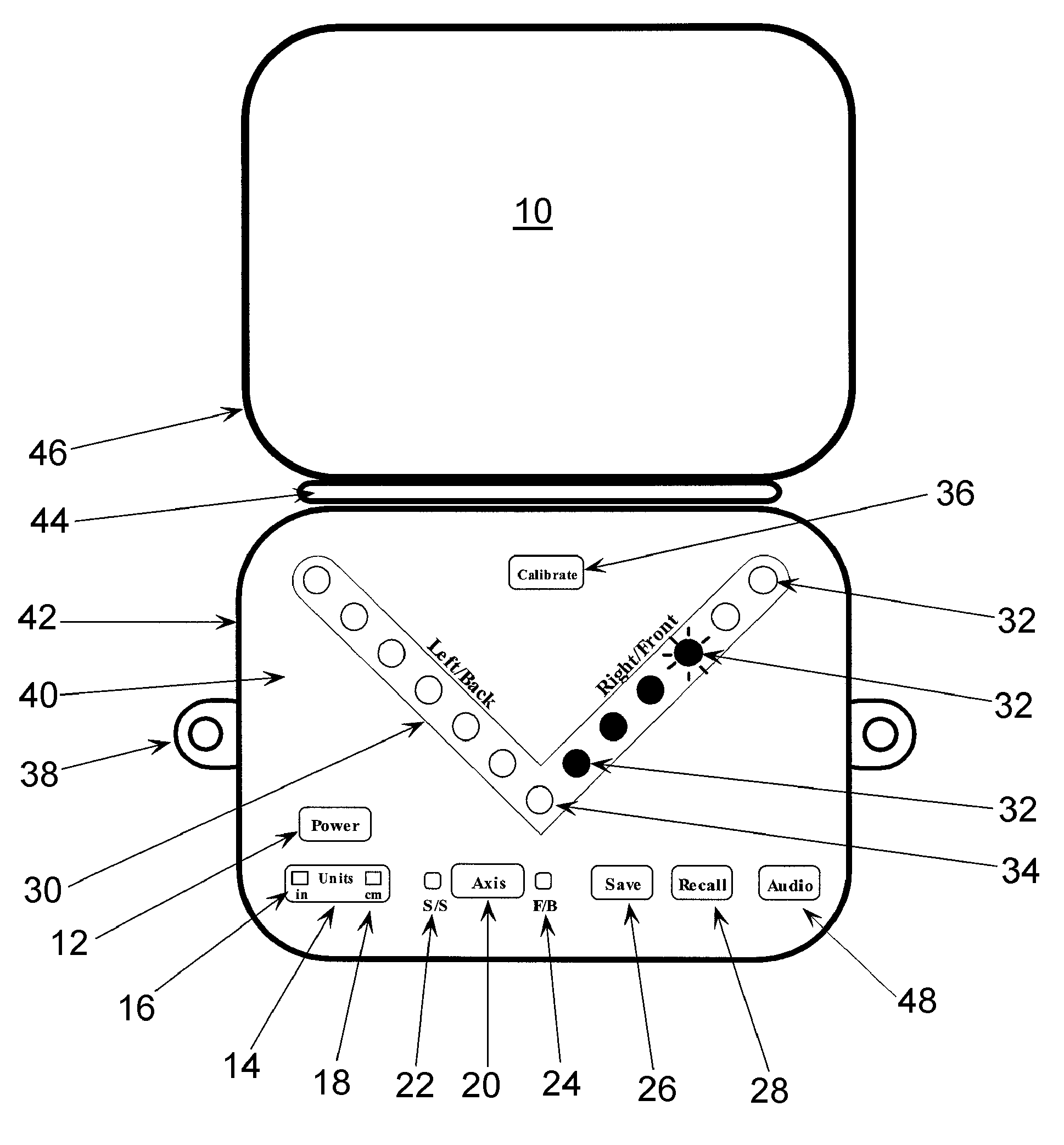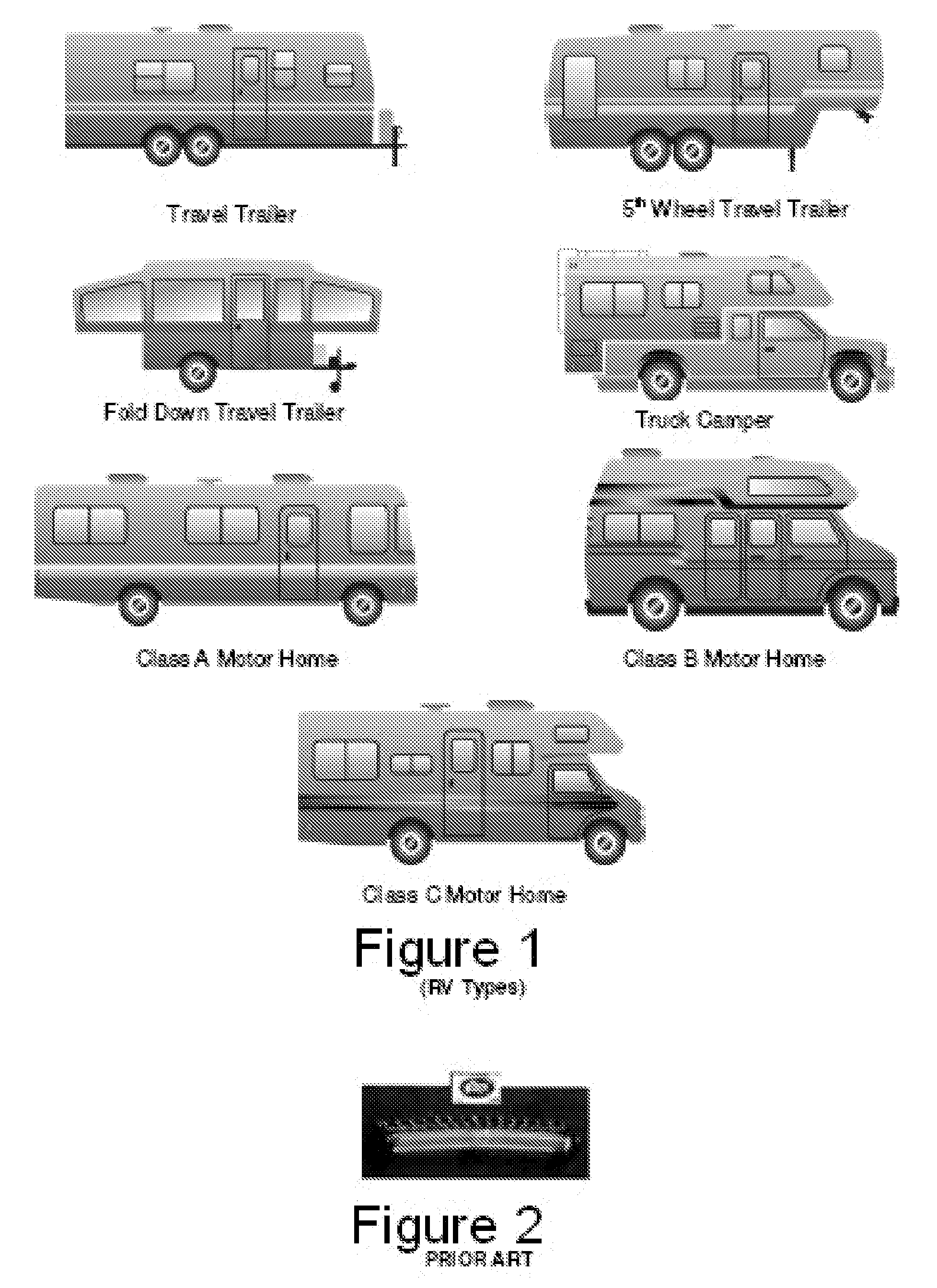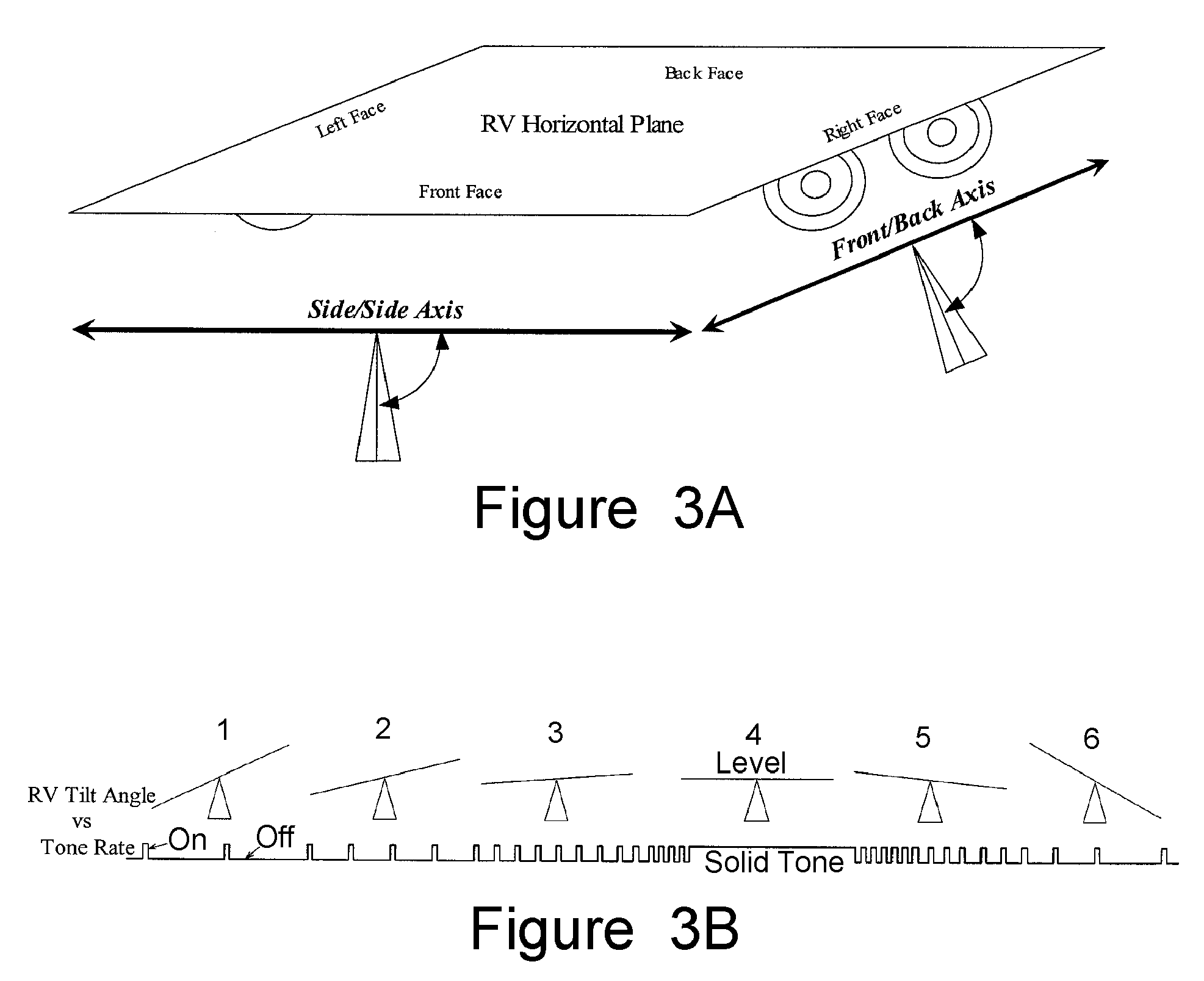Electronic Level Indicator for Recreational Vehicles and Other Mobile Platforms
- Summary
- Abstract
- Description
- Claims
- Application Information
AI Technical Summary
Benefits of technology
Problems solved by technology
Method used
Image
Examples
first embodiment
[0041]The electronic level indicator or device 10 according to the present invention is illustrated in FIG. 4, the reference numerals of which are explained in the following.
[0042]A Power Push Button 12 activates and deactivates the device when pressed. Further, the device 10 automatically deactivates after a defined period of inactivity.
[0043]A Units Push Button 14 enables selection or toggling between displayed units of elevation on the Inclination Display 30, discussed further below, between inches and centimeters. An Inch Units Indicator Light 16 will, when activated, indicates the device displays elevation information in inches and a Centimeter Units Indicator Light 18, when activated, indicates the device displays elevation information in centimeters. The elevation amount is a measured linear distance at a given point along the axis, such as the wheels in a side to side axis and the bumpers (or jack locations) for the front to back axis.
[0044]An Axis Push Button 20 toggles the...
second embodiment
[0056]The device front panel may be configured to display a single axis (at a time) as shown in FIG. 4, or the system can be configured to display 2 axis's simultaneously as shown in FIG. 5A. The electronic level indicator 50 according to the present invention is illustrated in FIG. 5A. FIG. 5A depicts an alternative layout of the inclination display indicators 52. In this configuration, both the S / S and F / B axis can be displayed simultaneously, or individually. The axis button 20 will now cycle through the display of the S / S axis only, the F / B axis only or both axis simultaneously, which will be displayed appropriately by lights 22 and 24. The functionally of the device push buttons 12, 48, 26, 28, 36 and 14 are the same as described for FIG. 4. In this embodiment the left spoke of lights 32 are utilized to indicate the elevation of left side of the RV in the S / S axis only and the right spoke of lights 32 are utilized to indicate the elevation of right side of the RV in the S / S axi...
PUM
 Login to View More
Login to View More Abstract
Description
Claims
Application Information
 Login to View More
Login to View More - R&D
- Intellectual Property
- Life Sciences
- Materials
- Tech Scout
- Unparalleled Data Quality
- Higher Quality Content
- 60% Fewer Hallucinations
Browse by: Latest US Patents, China's latest patents, Technical Efficacy Thesaurus, Application Domain, Technology Topic, Popular Technical Reports.
© 2025 PatSnap. All rights reserved.Legal|Privacy policy|Modern Slavery Act Transparency Statement|Sitemap|About US| Contact US: help@patsnap.com



